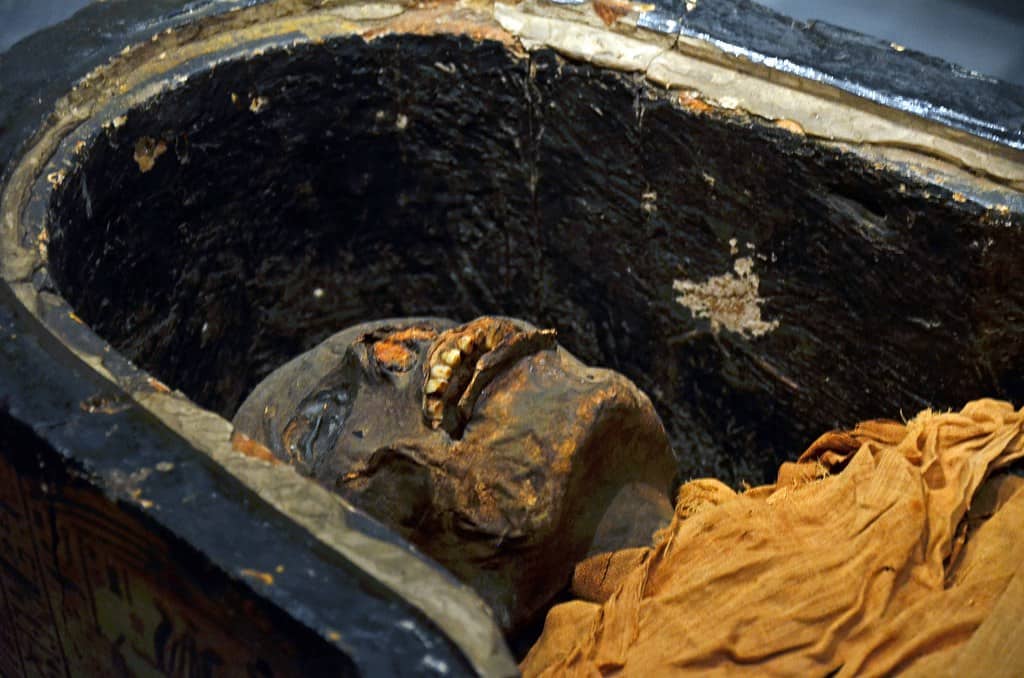Ancient Egyptian mummy ‘brought back to life’ as scientists recreate his voice
Researchers from 4 big named colleges and museums have resurrected the voice of a 3000-year-old priest from Egypt with the help of a 3D printer.
Nesyamun, whose coffin was inscribed with “true of voice” when he died, was a priest and scribe during the reign of Pharaoh Ramses XI from C. 1099 to 1069 BC.
According to the researchers, the voice of the priest was a vital tool in carrying out duties at the state temple of Karnak in Modern Luxor.
The priest also expressed a desire to be still heard once in the afterlife.
The researchers, who are from the Royal Holloway, University of London, University of York and Leeds museum managed to resurrect the priest’s voice with the help of a 3D printer.
The team recreated the vocal tract of the priest by placing his remains through a CT scan so they could take a precise measurement of his speech organs.
The team then 3D printed a replica of his vocal tract, which is known as the Vocal Tract Organ.

By using the Vocal Tract Organ along with an artificial larynx sound, which is commonly used in today’s speech synthesis systems, the team managed to recreate the sound of the priest.
The researchers said the tract can only produce a single vowel sound.
The bad thing about this is that the researchers didn’t get to see the tongue of the priest, which was expected to be lost over the past thousands of years ago.
Researchers said the sound they managed to recreate isn’t the exact fit for the priest’s voice because his tongue was lost.
David M Howard, the co-author of the study, said the Vocal Tract Organ’s ability to produce full sentences is something that is being worked on by experts.
Talking about the chances of recreating the exact tone of the priest or other people in the future, David said, “It will be possible one day.”
Rudolf Hagen, a surgeon from Germany, expressed skepticism at the study.
Dr. Hagen, who specializes in throat reconstruction, said that even the most advanced tools could not currently give people living without a thorax a normal voice.
Not all professors were negative about the study.
Joann Fletcher, a professor from the department of archaeology at the University of York, had some kind words about the researcher.
She said, “Ultimately, this innovative interdisciplinary collaboration has given us the unique opportunity to hear the sound of someone long dead by virtue of their soft tissue preservation combined with new developments in technology.”
She added, “And while this has wide implications for both healthcare and museum display, its relevance conforms exactly to the ancient Egyptians’ fundamental belief that ‘to speak the name of the dead is to make them live again’.”

Who Was Priest Nesyamun?
Nesyamun was a priest at the temple of Amun, which is located in the Karnak Complex at Thebes, now known as Modern-day Luxor.
Nesyamun was a Waab priest. This means he had reached a certain level of purification and was allowed to approach the statue of Amun, which was located in the most sacred and forbidden sanctum of the Amun Temple.
Researchers believe that Nesyamun died in his 50s due to a severe allergic reaction.
The priest had suffered from gum disease and had severely deteriorating teeth.
Nesyamun is the only mummy that has been dated from the reign of Ramses XI.
The mummified body of Nesyamun offers important insights that have helped scientists in having a better understanding of ancient Egypt.
The mummified remains of the Waab Priest are currently on display at the Leeds City Museum.




